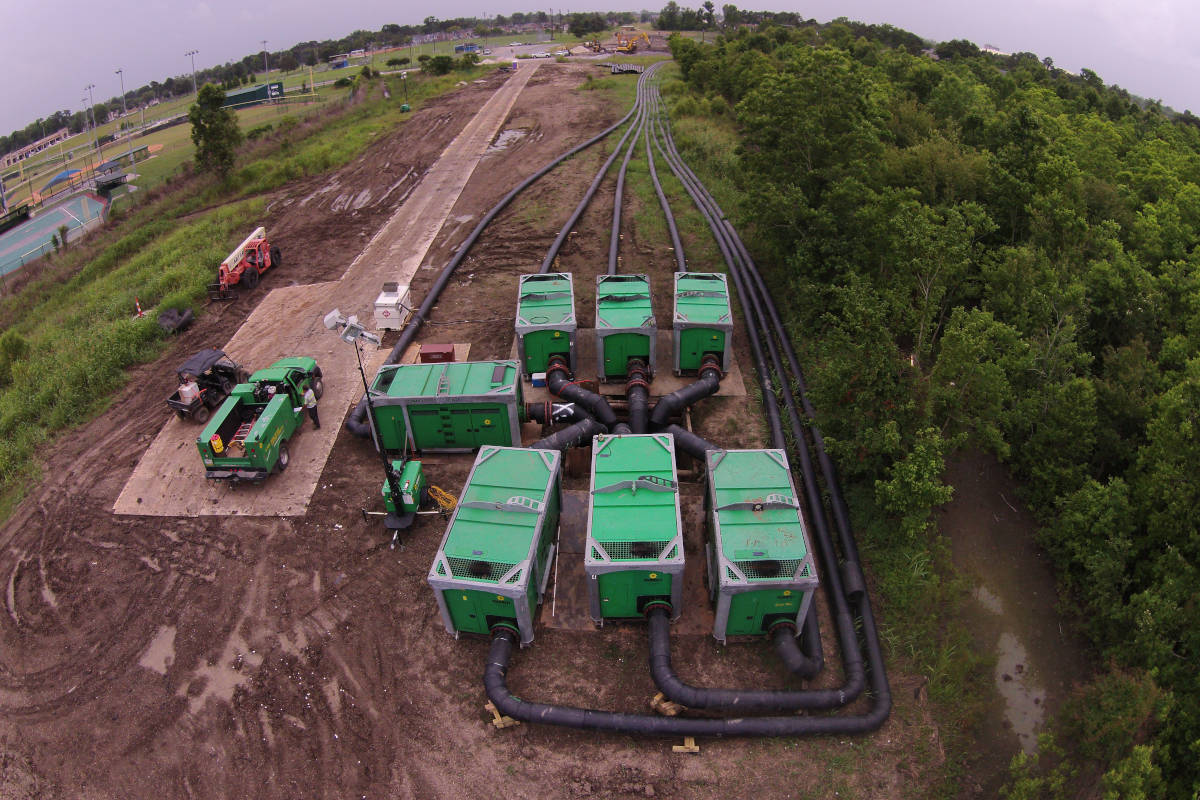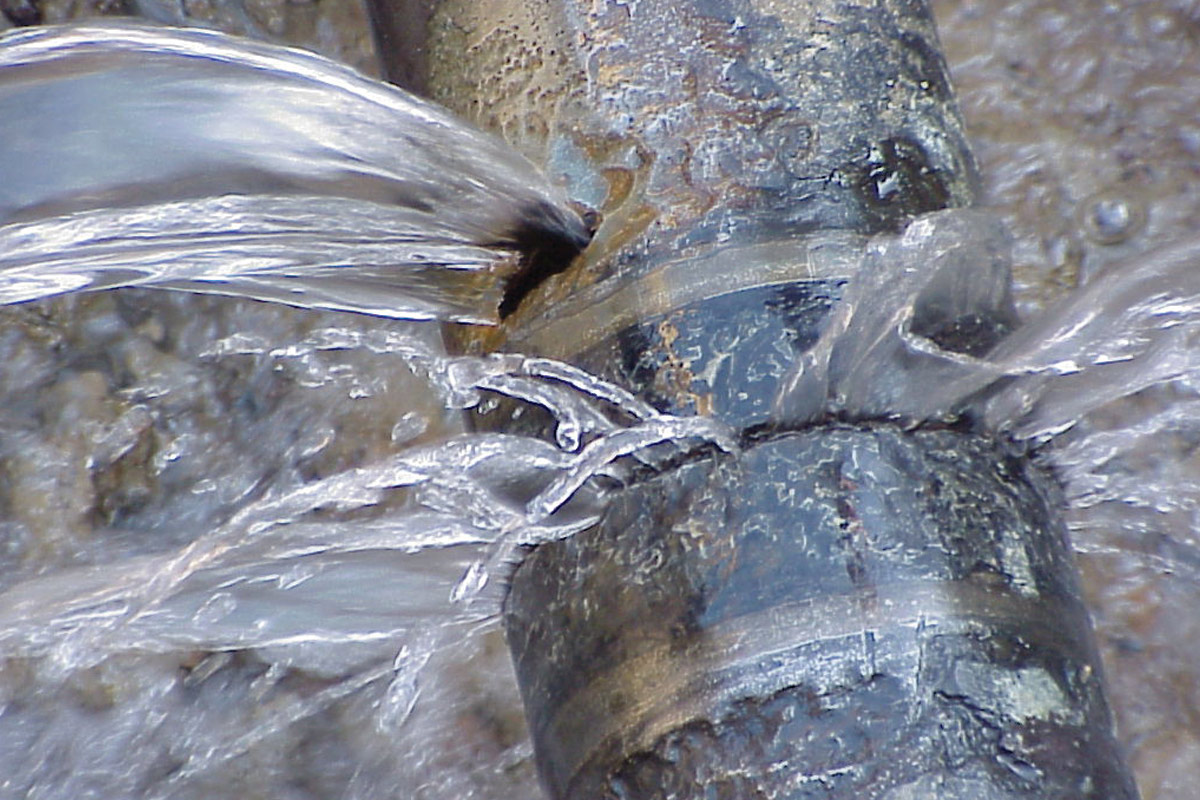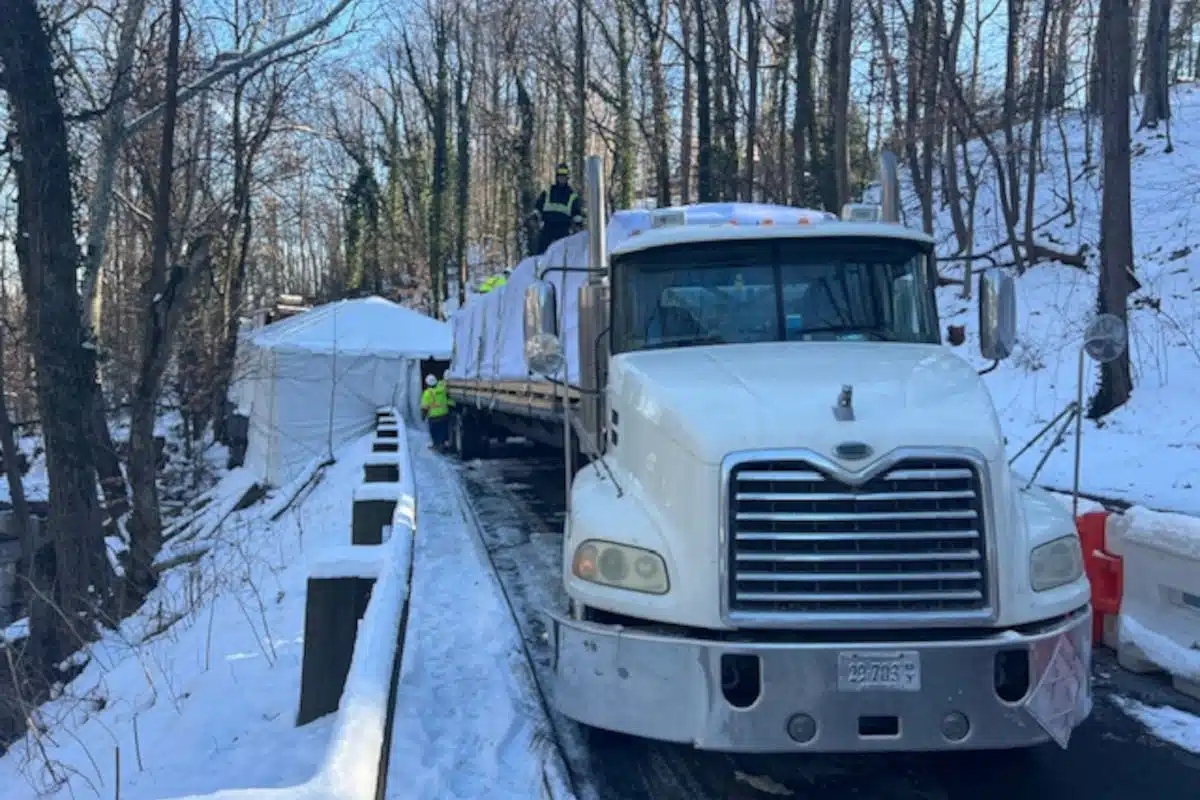
2015 Project of The Year- Rehabilitation: Pipe Bursting at Arlington National Cemetery
October 23, 2015

Murphy Pipeline Contractors has completed pre-chlorinated pipe bursting of more than 44,500 ft of 6-, 8- and 10-in. potable water mains, replacing the old cast iron mains with HDPE throughout Arlington National Cemetery.
Arlington National Cemetery Water Main Replacement Program
Arlington National Cemetery is the final resting place for thousands of our nation’s heroes. The cemetery’s history dates back to 1864 when the first military burial took place during the Civil War. Today, more than 400,000 active duty service members, veterans, their families and many more who gave service to country lay to rest within the cemetery’s hallowed grounds.
If you’ve visited Arlington National Cemetery, then you know its vast landscape, while scenic, paints a clear picture of the sacrifices made to protect America’s freedom. You also know it’s not the ideal site for noisy, intrusive construction projects that can disrupt the more than 3,000 funerals, ceremonies and memorial services each year.
Nevertheless, preservation of the cemetery above and below ground is a priority for the U.S. Department of the Army, which owns the cemetery. So when nearly 11 miles of the cemetery’s existing water mains needed replacing, the job required a method that would avoid any insensitive interference with daily activities and events.
In the specialized trenchless market, the benefits of employing such non-invasive methods are constantly touted, and this year’s Trenchless Technology Project of the Year for Rehabilitation is a prime example. Since 2012, five construction phases have been completed at Arlington National Cemetery, replacing more than 44,500 total ft of the existing 6-, 8- and 10-in. cast iron mains with new 6-, 8- and 10-in. HDPE pipe using pre-chlorinated pipe bursting. Pipe bursting was chosen as the most viable construction method due to its ability to reduce environmental and site impact, as well as disruption to cemetery activities. The U.S. Army Corp of Engineers Norfolk District served as the project engineer and Murphy Pipeline Contractors of Jacksonville, Fla., was contracted to complete the bursting.
According to the contractor, this is the largest potable water pipe bursting project to be completed in North America based on total length. Due to the size and the successful reduction in site impact, the project has been selected as Trenchless Technology’s 2015 Project of the Year for Rehabilitation. This is the second consecutive year that Murphy Pipeline has been the contractor on the Project of the Year winner.
“It’s an honor to have these awards,” says Murphy Pipeline president Andy Mayer, who has more than 35 years of experience in the trenchless industry and was instrumental in bringing pre-chlorinated pipe bursting from the United Kingdom and introducing it into the U.S. market in the early 2000s.
“This was a challenging but very rewarding project,” says Mayer. “If it had to be open-cut, it would have been a logistical nightmare.”
Arlington Topography
The challenges of completing any underground construction projects at Arlington National Cemetery are unique for several reasons. When the U.S. government purchased the 1,100-acre property in the 1860s (owned at the time by the family of Mary Anna Randolph Custis, wife of Robert E. Lee), 200 acres of the property were to be used for military burials. Although the cemetery has expanded today to more than 600 acres, the property was an ideal location due to its aesthetically pleasing view of Washington, D.C., and elevated location that could prevent flooding from damaging grave sites. The winding pathways of the cemetery conform to the natural topography of the site, much of which is naturally landscaped with flower gardens and trees.
Approximately 60 years ago, a series of cast iron water mains were installed for fire suppression and potable water uses on the site. The water lines snake up and down hillsides around the various sections of the cemetery. The water is primarily used for irrigation and to service visitor centers, public bathroom facilities and offices throughout the cemetery. In 2012, the cemetery and the U.S. Army began exploring options to replace the aging cast iron mains.
According to Todd Grafenauer, education director for Murphy Pipeline, the Army Corps of Engineers Norfolk District never seriously considered open trench as an option once early planning began.
“During the design phase, the U.S. Army Corps of Engineers knew that open trench just wasn’t a possibility for this project,” says Grafenauer, who also does business development, feasibility studies, cost analysis and design guidance for Murphy Pipeline. “When you look at the site and the amount of visitors they have, this is one of the most sensitive government properties there is. Open trench was just not a possibility. In addition, we really didn’t know what was below the ground, which really presented challenges.”
Minimizing Site Impact
If the topography alone wasn’t enough to make the project difficult for an open-cut or trenchless solution, there was also the matter of daily activity throughout the cemetery, which draws an estimated 11,000 visitors each day.
According to Arlington National Cemetery’s website, the cemetery also conducts between 27 and 30 funeral services each week day and between six and eight services on Saturday. Grafenauer says Murphy Pipeline crews would often encounter five to 10 funeral processions a day.
“You didn’t know, from a construction standpoint day-to-day, where these funerals would be,” he says. “So we would get a notice, maybe 10 minutes before the procession would be coming by.” Out of respect, it was required that all equipment would be shut down and crewmembers would remove hard hats while the processions passed.

One of the biggest challenges on this project was minimizing site impact, as bursting locations were often in proximity to headstones, popular tourist locations and passing funeral processions.
Staging, Fusing & Bursting
According to Grafenauer, Arlington National Cemetery supervisors on the project had never worked with pipe bursting. Therefore, the Army Corps of Engineers wanted a contractor on the project that was not only capable of minimizing site impact, but also one that had sufficient experience working with trenchless technology. Murphy Pipeline was contracted for the pipe bursting phases through the federal contractor Patriot Construction.
The process started in staging areas, where 40-ft lengths of the HDPE pipe supplied by ISCO Industries were fused together using butt fusion. Murphy Pipeline used a McElroy Rolling 28 fusion machine to fuse the 6-in. DIPS DR 11 Driscoplex HDPE pipe. The Rolling 28 is capable of fusing thermoplastic pipe from 2-in. IPS to 8-in. DIPS. Sizes smaller than 8-in. DIPS are fused by applying jaw inserts to reduce the inner diameter of the four jaws of the fusion machine. The pipe was fused in lengths between 300 and 600 ft before the ends were capped. Each pipe section was then bacteriologically disinfected and pressure tested in the staging area prior to installation. Two consecutive days of samples were taken, each 24 hours apart, and checked for bacteriological clearance.
Once construction began, the bursting was performed in proximity to popular tourist locations and sensitive areas like President John F. Kennedy’s memorial and the Tomb of the Unknown Soldier at the Arlington Memorial Amphitheater. On the Arlington project, the staging area was located away from the bursting locations as is typical on pre-chlorination bursting projects. “That’s one of the assets of this process,” Grafenauer says. “We can prepare the pipe away from the critical areas of the cemetery which greatly helped to reduce site impact.”
After each pipe section was fused and pressure tested, each section goes through the pre-chlorination process. To install the HDPE, Murphy Pipeline crews excavated small entry and exit pits. After the original cast-iron main was decommissioned, long metal rods traveled through the existing main to the launch pit, where a blade set, expander and HDPE piping were attached to the rods. Once all equipment was in place, the pull-back process began. During the pullback, the expander forced the existing cast iron mains to split and the pieces of the old pipes were pushed into the surrounding soil. The new HDPE pipe was then pulled through the space created by the expander.
Crews then performed post-chlorination and flushing of the main before the new line was connected into the distribution system. On a typical day, entry and exit pits were dug in the early morning hours, and the pipe was pulled back and burst through the old pipe by the early afternoon. A typical burst was about 500 ft and Murphy Pipeline crews used an 80-ton Grundoburst static pipe bursting rig from TT Technologies to complete the bursting.
“I think this project is a testament to the technology and to Andy,” Grafenauer says. “Using static pipe bursting for potable water is completely different from using pneumatic pipe bursting to replace sewer. As such, a lot of development and education has been necessary. It is impressive that communities are realizing the value in the technology. The success of the process and Andy’s work is demonstrated every time the owner uses the method again and again.”
 Since 2012, five construction phases have progressed at Arlington, replacing more than 44,500 ft of the cemetery’s water mains. Grafenauer says Murphy Pipeline was given about four months to complete each project phrase, all of which were completed well ahead of schedule. Phase 5 was completed in February 2015 and there is a Phase 6 currently in the planning stages. According to Mayer, there’s a possibility of a seventh project phase in the future, which would likely complete the replacement of all potable water lines in the entire cemetery and would put the total length of replacement at more than 57,000 ft.
Since 2012, five construction phases have progressed at Arlington, replacing more than 44,500 ft of the cemetery’s water mains. Grafenauer says Murphy Pipeline was given about four months to complete each project phrase, all of which were completed well ahead of schedule. Phase 5 was completed in February 2015 and there is a Phase 6 currently in the planning stages. According to Mayer, there’s a possibility of a seventh project phase in the future, which would likely complete the replacement of all potable water lines in the entire cemetery and would put the total length of replacement at more than 57,000 ft.As for Mayer, he agrees with Grafenauer and says the project is a testament to the growing acceptance of static pipe bursting in the United States.
“The work that’s been involved over the years with bringing pipe bursting using pre-chlorination to fruition and becoming an accepted methodology is rewarding, and picking up [awards] is defining for me. To put a plaque on the wall and look back at what I’ve achieved and what my crew and the people around me have achieved, it’s an honor.”
Andrew Farr is an associate editor of Trenchless Technology.




